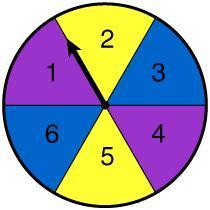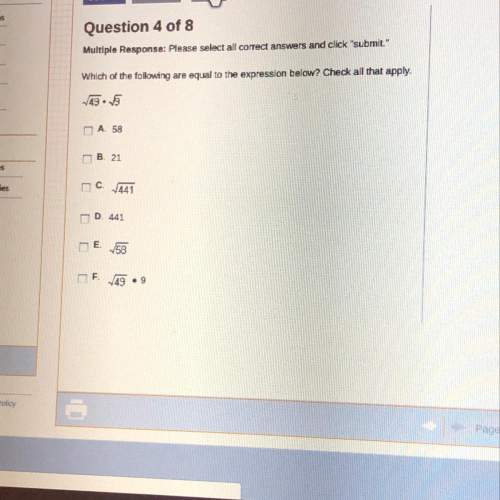
Mathematics, 13.04.2021 06:40 yohannaG4315
Some people believe that wearing copper bracelets can help decrease the symptoms of arthritis in the hands. A doctor decides to test this theory by randomly assigning 100 of her patients with arthritis of the hand to wear a copper bracelet for three months, 100 to wear a nickel bracelet for three months, and the remaining 79 to wear no bracelet for three months. After three months, she finds that the average pain rating in the first group has decreased 1.5 pts (on a scale of 1 to 10) as opposed to a decrease of 0.3 points in the second group and no change in the third group. (a) Is this an observational study or a controlled experiment? Explain. (b) Can the researcher conclude that wearing a copper bracelet causes a decrease in symptoms of arthritis? Explain. (c) Identify the four steps of this statistical investigation. 1. Ask a question that can be answered by collecting data 2. Decide the plan to collect data for the study. (Identify the subjects and the outcome variables.) Are the outcome variables numerical or categorical? 3. Summarize and analyze the data. 4. Draw a conclusion and communicate the results.

Answers: 2


Other questions on the subject: Mathematics

Mathematics, 21.06.2019 18:30, miayadeliss6910
How do you determine whether a relationship represented as as graph is linear or nonlinear
Answers: 1

Mathematics, 21.06.2019 20:00, alondrahernande3
Which sums are equal to 1hold 6/8? choose all answers that are correcta.1/8+6/8b.12/8+2/8c.8/8+1/8 +1/8+1/8+1/8+1/8+1/8d.8/8+6/8
Answers: 1

Mathematics, 21.06.2019 21:30, gonzalezashley152
In a test for esp (extrasensory perception), the experimenter looks at cards that are hidden from the subject. each card contains either a star, a circle, a wave, a cross or a square.(five shapes) as the experimenter looks at each of 20 cards in turn, the subject names the shape on the card. when the esp study described above discovers a subject whose performance appears to be better than guessing, the study continues at greater length. the experimenter looks at many cards bearing one of five shapes (star, square, circle, wave, and cross) in an order determined by random numbers. the subject cannot see the experimenter as he looks at each card in turn, in order to avoid any possible nonverbal clues. the answers of a subject who does not have esp should be independent observations, each with probability 1/5 of success. we record 1000 attempts. which of the following assumptions must be met in order to solve this problem? it's reasonable to assume normality 0.8(1000), 0.2(1000)%30 approximately normal 0.8(1000), 0.2(1000)% 10 approximately normal srs it is reasonable to assume the total number of cards is over 10,000 it is reasonable to assume the total number of cards is over 1000
Answers: 1

Mathematics, 21.06.2019 21:40, carson5238
If angle b measures 25°, what is the approximate perimeter of the triangle below? 10.3 units 11.8 units 22.1 units 25.2 units
Answers: 2
You know the right answer?
Some people believe that wearing copper bracelets can help decrease the symptoms of arthritis in the...
Questions in other subjects:

Chemistry, 01.10.2019 04:00


Mathematics, 01.10.2019 04:00

English, 01.10.2019 04:00

Mathematics, 01.10.2019 04:00

English, 01.10.2019 04:00


Mathematics, 01.10.2019 04:00







